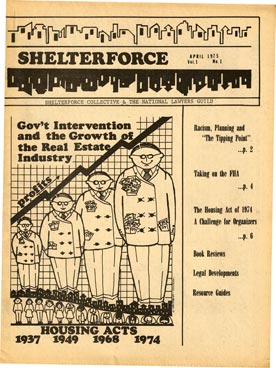Thankfully, the legislative year is finally winding down, although much business remains. As of this writing, we still do not have a budget bill, a HUD appropriations bill, or a housing authorization bill approved by Congress and signed by President Clinton. While the government is back up and operating under an “agreement” that got federal workers back on their jobs after a one-week shutdown, the president and Congress still seem far apart on the budget framework. Some see some sort of “seven year” balanced budget compromise emerging, while others believe that the impasse might continue into next year and become part of the presidential campaign.
However, Congress has made many changes to the bill since the original House and Senate versions went to conference, and most of the change is positive. The conferees added nearly $1 billion to the housing budget to bring the 1996 total back up to $21 billion (compared to last year’s $26 billion). Where did the money come from? The budget bill contains substantial restructuring of FHA mortgage assignment procedures, which will save HUD more than $1 billion. Most of these savings were returned to the housing budget and allocated to programs, such as public housing, Section 8, and assistance to the homeless, where the cuts were most severe. While this is good news on the appropriations side, it is bad news for FHA homeowners who find themselves in financial trouble due to illness or job loss. FHA will be able to help such families for much shorter periods of time before foreclosure and only where the family is able to resume full debt service payments immediately. This is just the latest example of the unfortunate position we find ourselves in – victories for some programs come at the expense of others.
Despite the gloom of 1995, there were some victories and some bullets successfully dodged. The Preservation program, pronounced dead last spring, was extended for one year, funded at $624 million, and targeted to nonprofit purchases. A move to increase tenant rent contributions in Section 8 was defeated. A decision on HUD’s “Mark to Market” plan, with its massive shift to vouchering out the assisted housing stock, was delayed until next spring. All Section 8 contracts up for renewal were extended for another year. While claiming victories in this environment may seem like whistling past the graveyard, we should acknowledge that our work has had an impact.
We now have some breathing room before next year’s fights. And the upcoming battles will be just as important, perhaps even more so, than this year’s. Early in the year, Congress is to consider public housing “reinvention,” Mark to Market, and the future of project-based assistance. The merger of HOME and CDBG, and the dramatic downsizing of the CHAS/Con, are also possibilities. And, of course, there will be a new struggle over appropriations for housing. Perhaps there will even be a serious attempt to eliminate HUD itself. Next year’s actions on the Hill will clearly change the face of many housing programs we have supported and worked with over many years. Yet our challenge is not simply to oppose change. Change is coming whether we like it or not. We must fight those provisions that will be most devastating to poor families, but we must also have a voice in shaping new policies that will serve as the foundation for the next phase of national housing policy.
Like many social activists, housing advocates are weary, and the struggle seems never ending. But the truth is that the tidal wave of the new Congress’ assault on “big government” and the poor has finally crashed on the beach and is receding. There will be more waves, but we’re still breathing, and housing programs are largely intact. Enjoy the holidays and rest up…next year may be our turn to win a few.



Comments